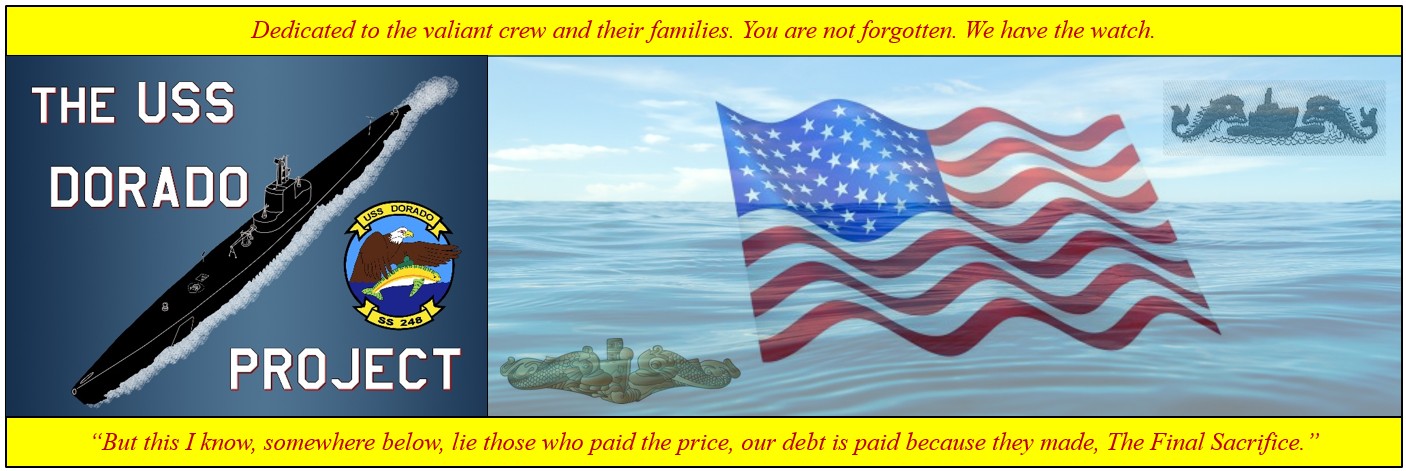Dorado Crew

| Main Page | Latest News & Updates | The Submarine | The Crew | Photographs | The Loss Scenario | The Aircraft | Case for the Purple Heart | The Myths | Research Documents |

The crew is lead by its officers, college educated men that provide the boat with its direction and resolve. At the top is the Commanding Officer (aka CO or Skipper), a seasoned veteran and experienced man of the sea, a man who knows the "art" of submarining down to its core. During WWII the CO could be a senior Lieutenant (LT), but was most often a Lieutenant Commander (LCDR) or Commander (CDR). By 1943 the CO of a fleet submarine had risen up through the officer ranks, having served on several submarines previously, and had likely also had surface ship experience. He would be intelligent and driven, capable of multi-tasking on a high level. He would be capable of solving complex mathematical calculations quickly in his head, all the while managing a complex fighting machine in a calm and decisive manner.




In the fall of 1943 it was common to have only about 60% of the crew qualified when a new submarine is commissioned. Some of the crew have come from other submarines and are already qualified, but since the bulk of the crew are actually junior enlisted and officers many of them are still learning when the boat leaves the states for the war zone. The goal is to get the crew as close to 100% qualified as they can get before they depart their assigned station for the first war patrol. However, qualifying is a never completed process, as experienced crew members are constantly departing between patrols, with new ones arriving to replace them.
So this was Dorado's crew. The officers, Chiefs, and junior enlisted that provided that fighting submarine with its heart and soul. In the words of submarine historian Ric Hedman, "These sailors were the boys down the street, around the corner, out on the farms. They were the high school football heroes, and yes, even the geeks of their time. But they became one of the elite, one of that 1% that made the cut and became "Qualified in Submarines". They were, and still are, the best of the best of the United States Navy."
For now, it is not our intention to list every member of the Dorado's crew here, as that function has already been thoroughly accomplished by our friend and colleague Charles Hinman at the On Eternal Patrol Dorado page. Please visit that page and acknowledge the men who sailed on Dorado.
What we would really like is to have family members and friends submit to us stories, remembrances, anecdotes, and photographs of the Dorado's crew. One of our primary goals is to ensure that these men, all of whom made "The Final Sacrifice" for us, will never be forgotten. It would be a museum of the crew, so to speak, posted here on this site. Help us to preserve their memory, and to honor them by sending your thoughts and memories to ussdoradoproject@gmail.com. Thank you!
Crew portraits courtesy of oneternalpatrol.com.
Page created by:
Thaddeus Weaver & David Johnston
©2025 - Thaddeus Weaver & PigBoats.COM
West Warwick, RI, Norfolk, VA
ussdoradoproject@gmail.com